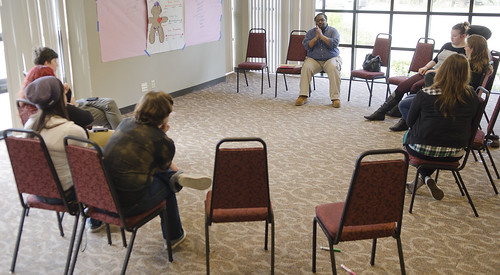
Last May, Senior Resident Assistant Joviana Carrillo spent nearly a month planning a local area network party for students in the residence halls to play multiplayer video games. After renting out part of the dining hall to hold the event, borrowing ethernet cables, setting up the room to accommodate people’s systems and making fliers and posters to advertise, Carrillo was expecting more than 30 people to attend. Only seven did.
Resident assistants spend hours planning and running programs in order to build a strong community for the nearly 2,500 students living on campus. Preparation for these events can take several weeks and often requires a compelling or fun subject matter, food and widespread advertisement. Despite all of this, the attendance for these programs tends to be low due to lack of student interest.
Out of a survey of 105 campus residents, 100 percent said they are well aware of the programs RAs facilitated, but 58 percent said they had not attended a single program during the academic year. Approximately 31 percent of residents said they had attended fewer than five programs this academic year.
“I’ve never had any interest in attending the programs,” said John Gehegan, a broadcast and electronic communication arts major who lives in the Towers. “They just don’t seem very fun. I don’t think I know anyone who likes to go to them.”
There are about 65 RAs on staff in all of SF State housing. Each RA is required to put on one educational program and one social program each month for their residents. Educational programs include topics such as stress management, job interview skills and cooking. Social programs range from karaoke night to ice cream socials to movie screenings.
Carrillo said that choosing the right time to put on a program can make a huge difference in attendance. Programs that take place during the week can often conflict with school schedules, but weekend programs sometimes have low attendance because residents have weekend plans.
“I think what keeps people from attending is the knowledge that they have a low attendance rate,” said Shaena Spoor, a kinesiology major who lives in the Village. “I guess that kind of fuels the cycle.”
Although many RAs put lots of thought and effort into planning programs, they don’t always take it personally when few residents attend.
“I think that some residents just don’t want to be involved as much as others,” said Ariel Lite, an RA in the Towers. “As RAs we try to put on many different programs relevant to many different interests, but they aren’t for everyone.”
Michael Combs, a political science major who lives in the Towers, makes a strong effort to attend as many programs as he can. Although he works two jobs and is often pressed for time, he has attended roughly 10 programs so far this academic year.
“Sometimes the RAs bring their programs up last minute, and with the packed schedule I’ve got, I really have to plan for those things,” Combs said. “I try to go to them because I want to support the RAs since they’re my friends. They’ve all been pretty fun so far.”
In areas like University Park South, it can be especially difficult to get residents to venture outside of their apartments to participate in staff programs. UPS Area Coordinator Shamina Harris believes the historically low attendance rates for the programs are partially due to lack of the indoor space to hold them. Still, she insists the UPS staff will continue to strive toward creating a strong sense of community for their residents.
“Over the past year, the UPS staff has worked hard to re-vamp programming in hopes of reaching a broader audience,” Harris said. “These efforts include programming during the daytime hours, utilizing our busiest intersections and sidewalk areas to reach residents, and working on teams to organize and implement quality programs.”
Carrillo, a current senior resident assistant who has worked for three years in both the Village and the Towers, said that although some of her more recent programs have had a higher turnout, she has arranged programs in the past where no residents attended.
“It’s like throwing a party and having no one show up,” she said. “It doesn’t make you feel very good, but it happens.”
She said that while having a large number of residents show up usually makes things a bit more exciting, she doesn’t believe a program’s success can always be measured by how many people attend.
“Large-scale programs are great when you’re trying to raise awareness, but I think RAs should think about impact more,” she said. “Sometimes it’s better when you don’t have 30 residents come because you’re able to give the few residents who do come individual attention.”




